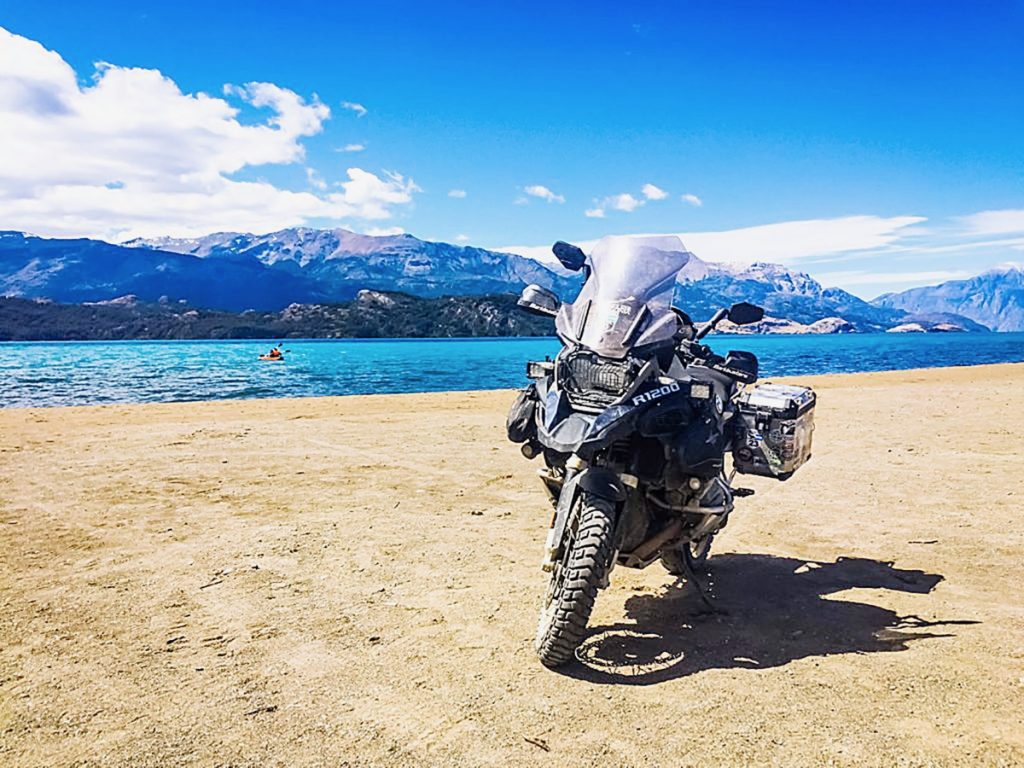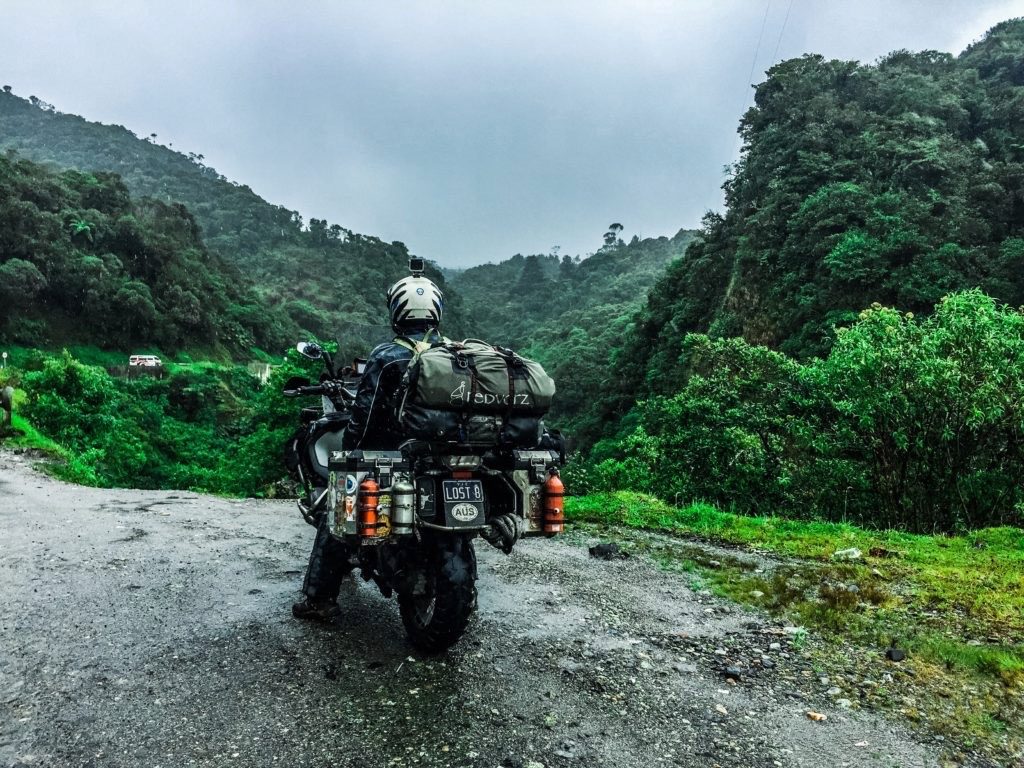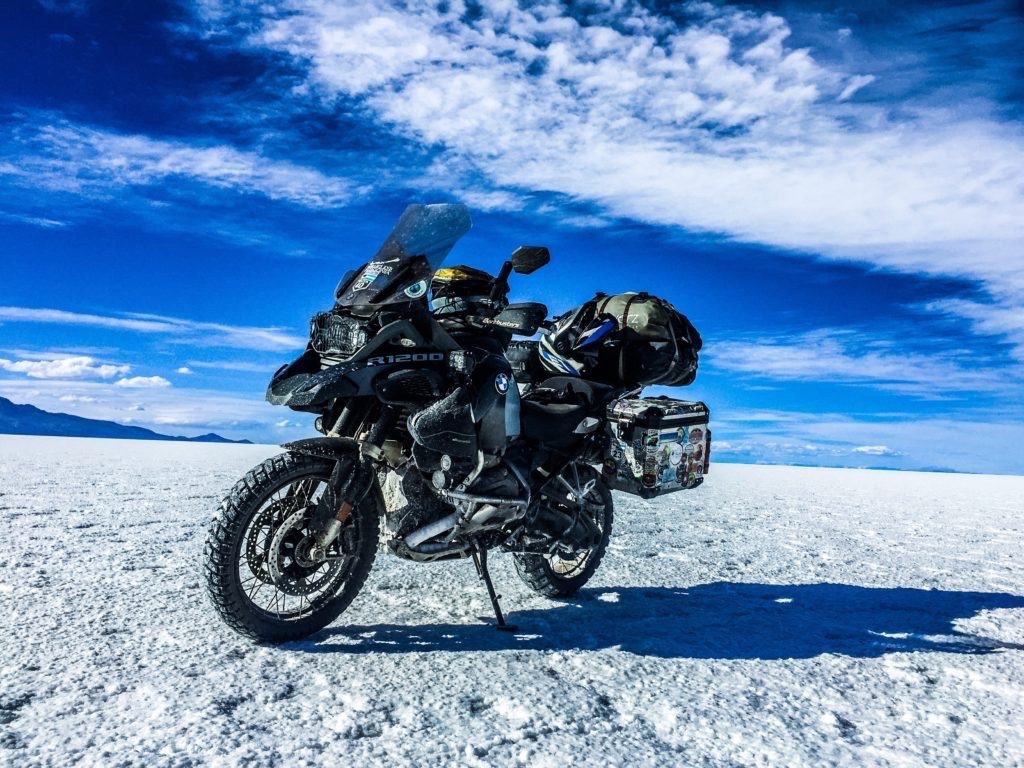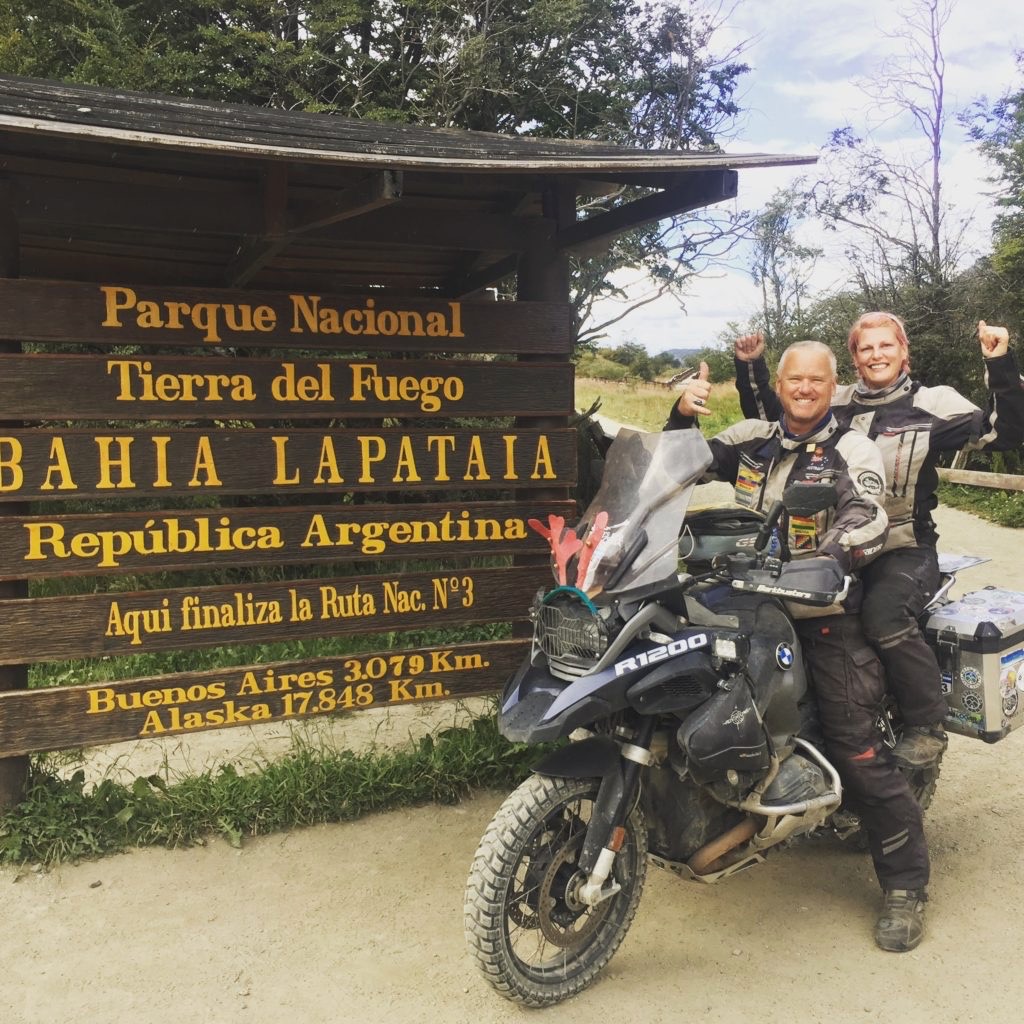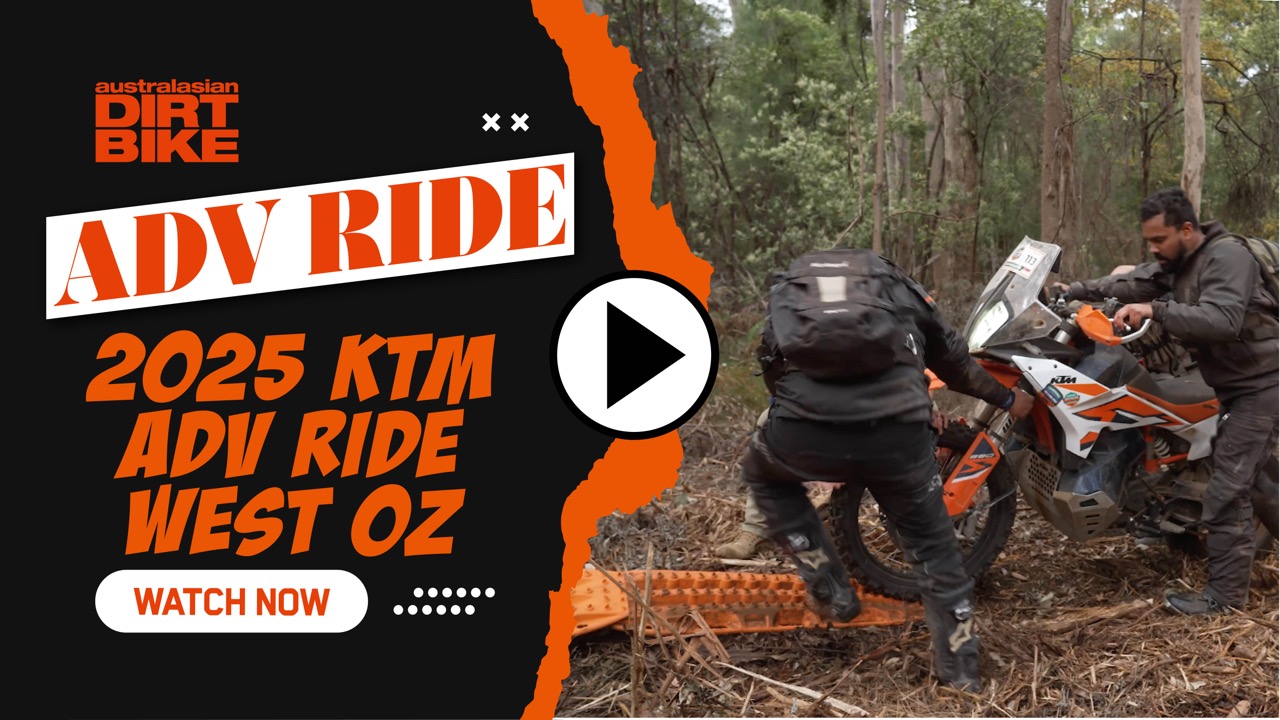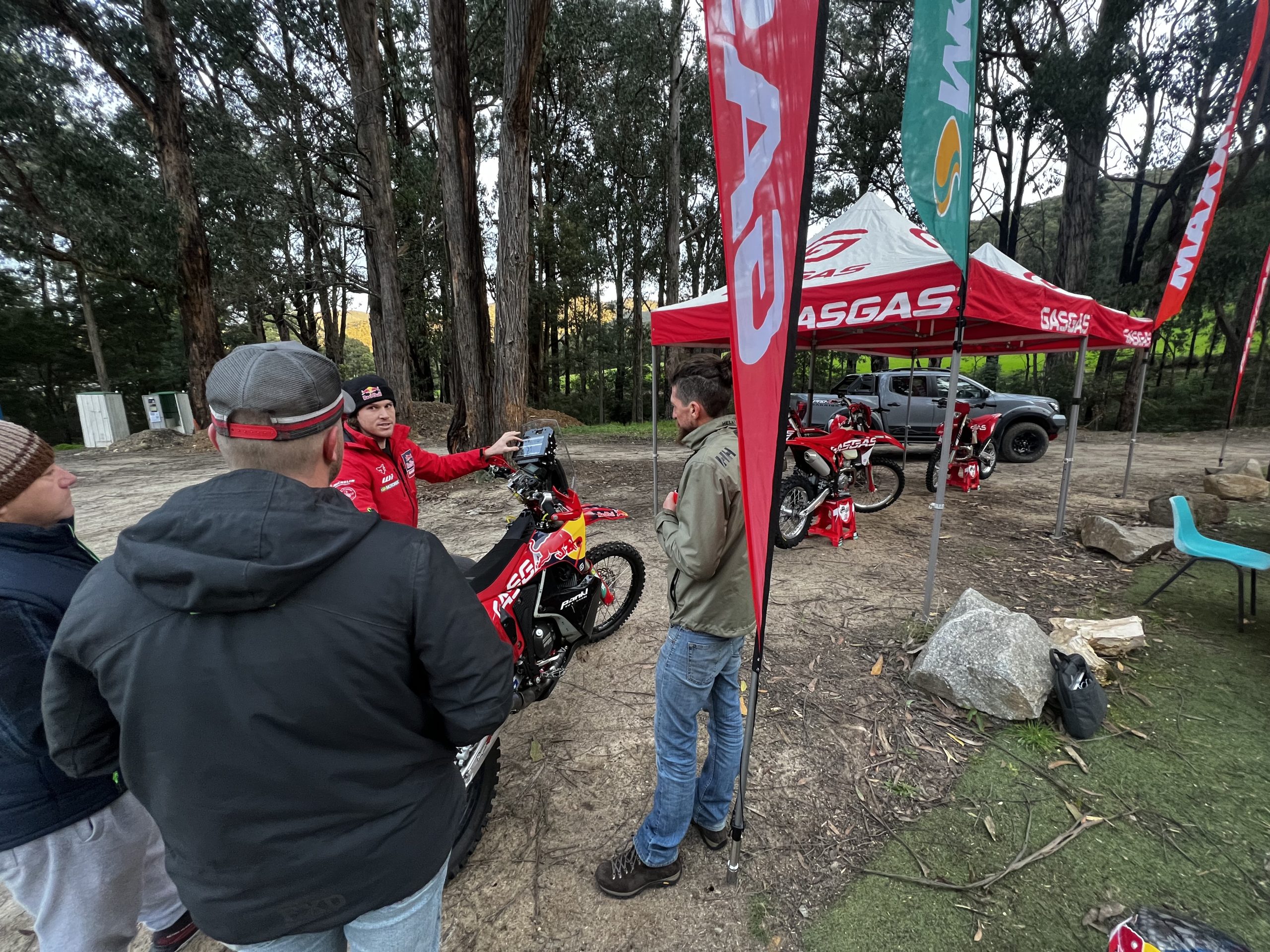It was my pride and joy and the most exciting thing that had occurred in my remarkably average suburban life. We grew up in the outer suburbs of Melbourne and in those days it was okay to ride around the paddocks and at the local quarry; my friends and I spent every available moment riding our bikes. \
Fast forward to 2017 and I’ve owned more than 40 motorcycles in 40 years, both dirt and road. I still have a Suzuki RM250G and GSX750 Katana sitting in the garage!
TICKET TO ADVENTURE
My love of dirt bike riding has never stopped and even though the opportunity to go out and ride with my mates has slowed down due to kids, work and life, we still manage to get out a few times a year, into the forests and high country. A couple of years ago my wife and I spent a week fishing at the Mitta Mitta River in Victoria and took a detour into Bright, where we stumbled across the Adventure Film Festival, which is an annual event, and the town was full of 4WDs, overland trucks, and best of all, motorcycles.
We spoke to a couple who had travelled the world on their BMW and promptly moved on to the pub, where we made the decision over a beer that we wanted to do a similar journey … all we had to do was work out where we wanted to go … and get a suitable bike! I knew I didn’t want to spend the majority of my time riding on the road and that the best places are always found off-road, so a touring bike was out of the question.
In the end, after riding a number of bikes, we settled on South America as our destination and a BMW R 1200 GS Adventure as our bike. For both my wife and I, plus all our camping gear, we felt this was the best bike available.
Now, contrary to popular belief, not all of us are ‘Starbucks riders’, who buy a brand new BMW GS/GSA and only take it out on a Sunday to ride to a cafe for a latte and home again, where the bike is washed and garaged until the following Sunday. For me, a bike is there to be used as it was designed. It’s designed to get dirty, it’s designed to be put down, it’s designed to be enjoyed!
Don’t get me wrong, during our travels I have looked after our bike and I do all the servicing and any required repairs myself, so from a maintenance aspect, it’s well looked after. But it gets ridden hard through all types of conditions and spends its fair share of time lying on its side.
ON THE ROAD TO NOWHERE
On 1 July, 2017, we left Melbourne for Santiago, Chile, with the bike flying with us. A week later after finalising all the paperwork we headed off into the mountains of Chile. My wife Emina (Em) had ridden as a pillion on a number of occasions but didn’t have a lot of off-road experience, so this was all new to her.
We had a rough plan of the places we wanted to visit and I simply chose dirt roads between A and B.
The early days were really tough on Em. As the pillion, she never stood on the pegs and had to contend with sitting and looking at my bum as I negotiated hairpin after hairpin turn. For a woman used to being in charge of things, this was a complete turn-around.
At one stage we ended up on a section used for the 2016 Dakar Rally and after four hours of constant loose gravel with multiple uphill turns and the rear of the bike sliding from side to side, she was exhausted. We agreed there had to be an easier way. Her solution was to travel on the tar; mine was to teach her to stand on the pegs. To date this has been one of our biggest achievements – the two of us standing during the difficult off-
road sections.
Initially I started getting Em to stand for 10 seconds to stretch her legs as we travelled slowly through a town. This then slowly progressed until she felt confident to stand at any time. Now when we approach a difficult section, whether it be a dry river bed with large loose stones, river crossings with water up to our knees, tight hairpin bends with loose surfaces, or simply where it might be a bumpy section, we both automatically stand, and in most cases without communicating.
For us, standing has meant a smoother ride for Em, as she’s not getting thrown around and she feels more confident and in control when she stands. For me, it not only lowers our centre of gravity from seat height, which in our case of carrying extra luggage is important, giving us a greater level of stability, but it also lowers the effort required to maneuvre the bike from side to side or over obstacles. And when the bike with all the gear, including us, weighs just over 500kg, I need all the help I can get.
NO FIXED ADDRESS
We’ve been away 16 months now and the experience has been great, the bike is still in one piece and we have enjoyed every minute of it. Sure, there have been ups and downs, but the places we have had the chance to see and the roads we’ve been able to ride on have been unforgettable.
We have travelled 70,000km in South America: north from Chile to Bolivia, through Peru, arriving at Cuenca, Ecuador, where we then turned around and headed south all the way to the ‘bottom of the world’ – Ushuaia, Argentina, for summer. After visiting Ushuaia we turned north again and as this is written we are in Colombia, having visited Uruguay, Brazil, Paraguay and the rest of Ecuador on our way through.
For me the opportunity to ride some of the best dirt roads in the world has been the highlight. There have been many occasions while I have been riding through these areas that I have stopped to simply take it all in and appreciate where I am and the hard work that allowed us to get here.
Roads such as the Caratel Austral (Chile’s Route 7), which runs 1240km from Puerto Montt to Villa O’Higgins through the stunningly beautiful Patagonia region with snow-capped mountains, windswept plains and ice blue rivers. Argentina’s Route 40 (RN40) was another highlight and while parts of it are sealed, it has some great off-road sections with multiple river crossings and passes through the Salta Province at 5000m elevation. And we will never forget Bolivia’s ‘Death Road’, a 56km twin-track road with steep drop-offs, some up to 600 metres high, which we rode on both our motorcycle and mountain bikes.
On our return journey up north we travelled through Peru on some of the toughest roads of our trip, doing a loop through the Huascaran National Park, where we laid the bike down seven times in a single day, as well as hitting a donkey, sending both my wife and I over the windscreen and smashing it to bits.
THE DEVIL’S TRAMPOLINE
Recently we rode the ‘Trampoline del Diablo’ (Devil’s Trampoline) in Colombia, which zig-zags through the Adean Mountain range for 70km. The day started out clear and the road fairly simple; things very quickly changed as we climbed higher up into the range with torrential rain. The area is notorious for mudslides during the rainy season and is often closed for weeks. We arrived at a long row of waiting cars to discover a truck had become bogged to its axles on a hairpin section, with torrents of water flowing around it. To make matters worse, fallen trees, washed down by the water were quickly starting to build up on one side of the truck. This truck wasn’t going anywhere anytime soon! We bypassed the waiting cars and joined some locals on their 125s at the front of the line, where we all made the decision to give it a go at trying to get around the truck.
Helping them get through the water and over the fallen logs was easy and we simply dragged the bikes through, however the 500kg BMW was a very different story.
But I was like a 10-year-old kid jumping with excitement, as these types of situations are the ones I enjoy the most and I couldn’t wait to give it a go. I set off with my wife and the locals on either side of the bike helping get through the knee-deep water and over the trees. I lay the bike down a number of times with everyone helping get it back on two wheels. In all my excitement I forgot to turn off the traction control. The bike has a number of different riding modes and in most cases I leave the bike in Enduro or Enduro Pro mode, which allows for different braking and for a certain amount of wheelspin before traction control steps in and cuts power to the engine. I should have turned it off, allowing the rear wheel to spin as much as it needed; instead it kept cutting all my power, making the task at hand all that more difficult. In the end we made it through and after thanking my wife and the locals for their help we continued … in the pouring rain.
NEXT ON THE AGENDA
We still have to complete Colombia, Central America and Mexico before heading home to Melbourne. So far the roads in Colombia have been some of the best off-road riding we have done.
Not surprisingly we are already discussing our next trip. A group of friends and I are planning to follow the Road of Bones route through Russia. At this stage I’m looking at doing it on a Suzuki DR-Z400 or DR650 with Safari tank and all the gear. Something reliable, with readily available parts and a whole lot lighter than the 1200.
I hope that by reading this we have inspired someone to start planning and give travel on a bike a go, as the places you will see will amaze you, the people you meet will inspire you and the roads you will travel on will leave you speechless.
Want to learn more of David and Em’s South American adventures? Check out their www.2wheelsinmotion.com.au website.
WORDS // DAVID MORIESON – PHOTOS // EM MORIESON
